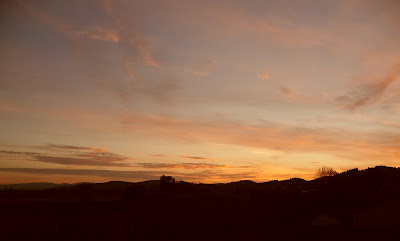You know how you get those emails?
Those emails.
The fantastical photos or stories that people just blindly believe and then breathlessly forward them to everyone in their address book.
Mostly, they kind of drive me crazy.
I check Snopes and then sigh to myself.
Sometimes I send a polite email to the perpetrator, gently reminding them to check their sources.
Sometimes I don't bother.
It seems that the hoaxes are diminishing in number lately, so maybe my job is done. There have also been some astounding stories coming down the pipeline. Things that send me to Google to research the topics further. Some of which I am about to share with you, my lucky, lucky readers.
First, let me introduce you to sinkholes.
The topic of the email was political, the mood was witty and sarcastic, but I was fascinated with the photos.
Here is the latest large sinkhole to appear in the world. It is in Guatemala City and appeared suddenly on June 1st, swallowing a three-story building. This sinkhole is 60 feet wide and 300 feet deep.
This photo is from the National Geographic website and you can see photos of more sinkholes from around the world here.
True sinkholes are usually caused by eroding of the bedrock, causing a Swiss-cheese-like effect that eventually collapses into itself. Mining can also cause similar holes. Apparently, a lot of Guatemala City is built on pumice landfill, which tends to erode in times of excess drainage. This faux sinkhole appeared in the midst of a tropical storm and, surprisingly, no one was killed. As scary as it looks, the casualties of the storm died in landslides, not here.
Another sinkhole in Guatemala City appeared a few blocks from this one in 2007 and was caused by a burst sewage pipe. Don't think I'll be moving there any time soon.
Next, we have a heart-warming story about a humpback whale.
Get out the Kleenex.
I'm a little late to the table on this one, because it was in the San Francisco Chronicle in 2005.
A humpback whale was spotted by a fisherman off the Farralon Islands. It was entangled in hundreds of feet of crab pot lines, which are weighted down every 60 feet. At least 12 crab pots, weighing 90 lbs each, were also hanging off the whale. The whale was barely able to float high enough to keep her blow hole out of the water.
Within a few hours, a rescue squad of divers was in the water with special curved knives, cutting her free. It was a dangerous job, as the whale weighed about 50 tons and one swipe of her enormous tail could kill a man. After working for an hour, the divers had freed the whale. According to the divers, she nuzzled each diver in turn, as if thanking them.
To read the entire story, go here, which is also the source of the photo.
Now that, my friends, would even beat swimming with the dolphins!
The last thing I am sharing has made me aware of how much plagiarism occurs on the internet. I received this in an email a few days ago and I have had a heck of a job finding the original source for the photos, because it is everywhere. It turns up on blogs as if the blogger was the original author. I think that this is the true source, because it has the actual name of the area, but who knows?
This is Lexiaguo, a remote area in the Yunnan Province in China. It is very hard to reach, so it is not on the tourism radar. It is 2,600 feet above sea level and has a bright red soil. Every inch of the land is planted in crops. If you go to the source, there is a series of lovely photos, along with a commentary. I highly reommend that you do, because it is a visual feast.
That's enough thrills for one weekend.
It is, after all, Halloween tomorrow, don't want to overdo it.




























